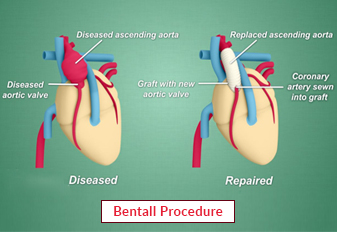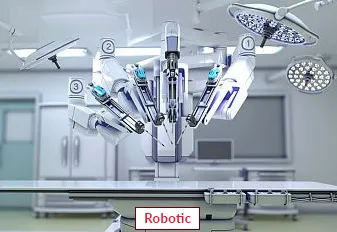Bentall Procedure

A Bentall procedure is surgery to help correct problems with your aorta. Your aorta’s role is to carry oxygen-rich blood from your heart to the rest of your body. Sized at around 30 centimeters long and 2.5 cm wide, your aorta is the largest artery in your body.
As with any surgery, there are some risks associated with a Bentall procedure. Common risks are those that more than 5% of patients may experience. These can include:
- Bleeding
- Abnormal heart rhythms, called arrhythmias– mostly temporary
- Short-term memory problems, blurred vision, and difficulty concentrating – mostly temporary
About Bentall Procedure
Bentall Procedure involves replacing the damaged aortic valve and aortic root with a composite graft, which consists of a synthetic tube and an artificial valve. This comprehensive approach addresses the underlying pathology, restores normal blood flow, and prevents potential complications such as heart failure or aortic rupture.
Procedure of Bentall Procedure
- Anesthesia and Incision: The Bentall Procedure is performed under general anaesthesia. The surgeon makes an incision in the chest, typically through a median sternotomy, to access the heart and aorta.
-
Cardiopulmonary Bypass: The patient is connected to a heart-lung machine, which takes over the functions of the heart and lungs, allowing the surgeon to operate on the still heart. The blood is diverted through the machine to ensure oxygenation and circulation.
-
Aortic Root and Valve Removal: The surgeon carefully removes the damaged aortic valve and the affected section of the aortic root. Special attention is given to preserving the coronary arteries, which supply blood to the heart muscle.
-
Graft Preparation: A synthetic graft, usually made of Dacron or another biocompatible material, is prepared to replace the aortic root. The graft includes a tube portion that replaces the damaged aorta and an artificial valve that ensures proper blood flow.
-
Graft Implantation: The prepared graft is sewn into place, connecting it to the remaining healthy section of the aorta. The artificial valve is secured within the graft, ensuring proper function and blood flow.
-
Coronary Artery Reattachment: The surgeon reattaches the coronary arteries to the graft, ensuring they receive an adequate blood supply.
-
Closing Incisions and Recovery: Once the graft is securely in place, the surgeon closes the incisions, and the patient is weaned off the heart-lung machine. The patient is then carefully monitored in the intensive care unit (ICU) for some time to ensure a smooth recovery.
Require Assistance?
Get A Quick Callback From Our Healthcare Experts
Other Specilities We Cover

Robotic Heart Bypass Surgery

Heart Bypass Surgery




